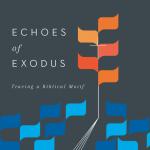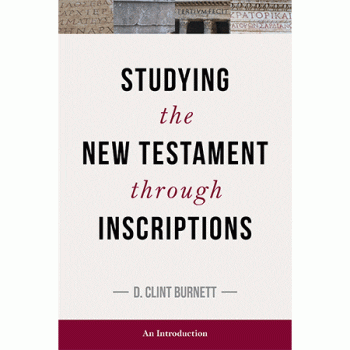Matthew R. Malcolm
From Hermeneutics to Exegesis: The Trajectory of Biblical Interpretation
Nashville, TN: B&H Academic, 2018.
Available from Lifeway.
Review by Michael Phillips
In this slim volume, Malcolm sets out to establish a robust practice of Christian biblical exegesis on rigorous hermeneutical foundations. As a final year Bible College student, I greatly enjoyed the breadth of hermeneutical approaches he surveys, and the respect and attention he pays to general hermeneutics. As the title suggests, the first half of the book is more theoretical and abstract in its discussion of hermeneutics, while the second half becomes much more practical and applied as Malcolm demonstrates his exegetical approach. This connection of explicit practice (he offers two significant examples of his exegetical method at work) to robust hermeneutical theory is a key strength of the book.
From Hermeneutics to Exegesis begins by defining hermeneutics and exegesis before turning to key historical thinkers in hermeneutics. From Socrates and Augustine through Luther to Schleiermacher, Heidegger and Ricoeur, he offers a brief but concise tour of key developments in Western hermeneutics. His integration of these viewpoints in the phrase: ‘a multifaceted encounter of others, each of which is located somewhere in time and place’ (p.43) lays the foundation for his consideration of the theological concepts embedded in this view (distinct, relational personhood and the bridging of otherness), which he argues are entirely consistent with the Christian understanding of the Trinity, the creation and the incarnation. He is thus persuasive that Christian interpretation is rightly understood as a subset of the field of general hermeneutics, since that field is concerned with human understanding in general. However, he distinguishes Christian interpretation of the Bible from other approaches by the ‘faithful prejudice of approaching the Bible as a divinely inspired witness to the Lord Jesus Christ’ (p.54).
From here, Malcolm further develops the theological underpinnings of hermeneutic possibility (ch.5) before defining a goal and method for human understanding (ch.6). He offers the image of a hermeneutic encounter as an interview, in which the reader of the text is more like an interview, prepared with certain background knowledge about the ‘other’ but also prepared to adjust their understanding in light of questioning and examination. In this way, he is consciously utilising the hermeneutical model of a spiral, moving between the particular in the text and a general or broad summary of it, towards a renewed understanding. After considering the impact of Christian theology, gospel and canon for Christian interpretation (ch.7), Malcolm moves towards an exegetical model (ch.8). This model involves two steps. Firstly, ‘priming’ involves background awareness of the text’s realm, mission, emergence, and historical reception, and the reader’s own realm, reading mission, emergence and reception community. This is not designed to foreclose interpretive possibilities, but to grant some understanding of the two horizons (that of the text and of the reader) that hopefully will be engaged in a transformative encounter. The second step is ‘refining’ one’s awareness of the text through careful attention to its linguistic features, including not only morphology, syntax and semantics, but also pragmatics and rhetorical impact. The final two chapters then offer examples of how this model plays out, firstly in regard to the Old Testament, and then in regard to a New Testament passage.
Key strengths of Malcolm’s text include its attention to significant hermeneutical issues that often plague Christian interpretive methods that simply seek the ‘author’s intention’ or the ‘plain or literal’ meaning of the text. Rather, he recognises the importance of both the text’s original context and reception history, as well as the reader’s context and personal history, all of which shape the transforming encounter of ‘others’. At the same time, however, Malcolm identifies the distinct features of Christian interpretation: treating the biblical text as part of the realm of Christian Scripture, and approaching it with a systematic theology already shaped by a reception community. More than this, he argues that the gospel of Jesus Christ is to be the cohering centre for distinctly Christian interpretation of the polyphonic Scriptures. Since the Scriptures vary greatly in genre and in their interpretive ‘openness’ (like an abstract poem) or ‘closedness’ (like an instruction manual), Malcolm recognises that no one exegetical procedure is always valid. Rather, careful attention to the text’s form, and historical context, as well as the interpreter’s reading mission may give guidance as to which tools are most helpful to use. In this light, Malcolm gives a very helpful overview of different interpretive approaches, ranging from source-critical and form-critical to liberationist and womanist approaches, including their distinctive strengths and weaknesses.
Overall, I found this a very valuable read, particularly as detailed attention to hermeneutics has not been a strength of my reception communities. Most of Malcolm’s actual techniques, and the questions he recommends asking of the text, were not especially ground-breaking or novel. However, he offers a comprehensive approach that pulls together many common features of exegetical methods and grounds them on an explicit hermeneutical footing. In this way, his book encouraged me to be an interpreter who holds a faithful prejudice towards seeing the Lord Jesus Christ at the centre of the Scriptures.












